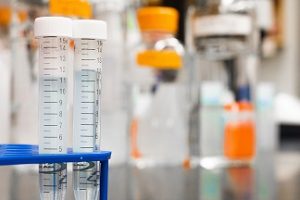Singapore: A Tiny Red Dot, A Scientific Powerhouse

The traditional bastions of scientific research have normally been found in the West, in places such as the United States and Europe. But now the tides are shifting. Asian research is quickly catching up to its Western counterpart. Countries such as China and South Korea are distinguishing themselves through a booming research sector, in addition to their flourishing economies.
Now Singapore can also proudly stand with other scientific powerhouses in the world. In fact, a photo of Singapore’s Gardens by the Bay graced the June 2018 cover of Nature, one of the world’s oldest and most prestigious scientific journals, underscoring our Tiny Red Dot’s growing prominence in science.
In this issue, Nature published a special feature focusing on five “science hubs” in East Asia. The magazine described this group as “incredibly diverse in priorities and approaches, but all see science and technology as keys to their future.” Singapore was identified as one such science hub, alongside Hong Kong, Malaysia, South Korea, and Taiwan. Nature further noted that, “With their substantial investments and strengths, these five research centres are working to secure their future as major forces in the global science landscape.”
In Singapore’s case, several factors underpin its reputation as a science hub, according to various statistics gathered in the Nature feature.
One factor is its relatively high spending in research and development, providing the necessary financial support. Another is its “citation impact”, the number of citations that a research article receives from other articles. This number is often used as a proxy for gauging the importance and impact of a particular piece of research. Singapore scored high above the world mean, outstripping even the United States and the United Kingdom. Nature attributed this result to “very high rates of international collaboration, which is linked to higher citations”.
Such outstanding scientific output would be difficult to achieve without the support from its scientific workforce. Accordingly, statistics from the Nature feature indicate that Singapore contains the second-highest researcher density within its population, despite being the smallest country among the five science hubs.

In addition to the statistics report, Nature also showcased the top ten “science stars” in East Asia, with two Singaporean scientists standing among their ranks. One of them is Dr Li Jing Mei, senior research scientist at the Genome Institute of Singapore, lauded for her study of breast cancer mutations and epidemiology. The second is Professor Loh Kian Ping of the National University of Singapore, acclaimed for his groundbreaking work on graphene and other nanomaterials.
Singapore’s inclusion among Nature’s five science hubs is another indication of how it has distinguished itself in the field of science and technology. Our road ahead looks bright and exciting times are in store for us. Continuing our progress will also require constant support from people from all walks of life, so keep supporting science in your own unique way!